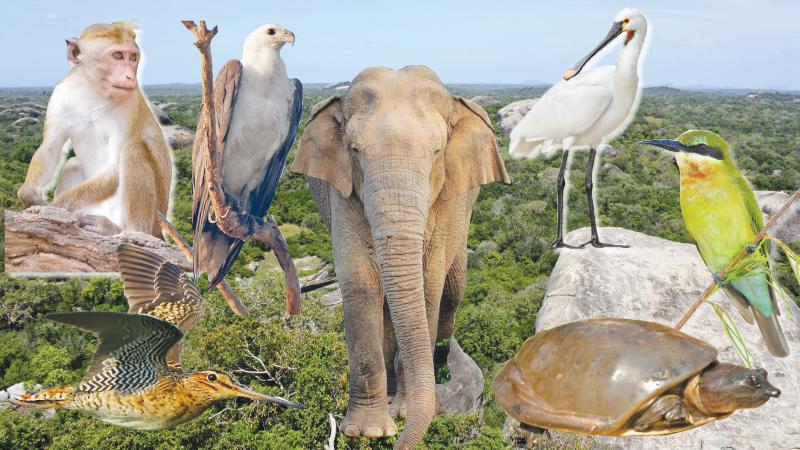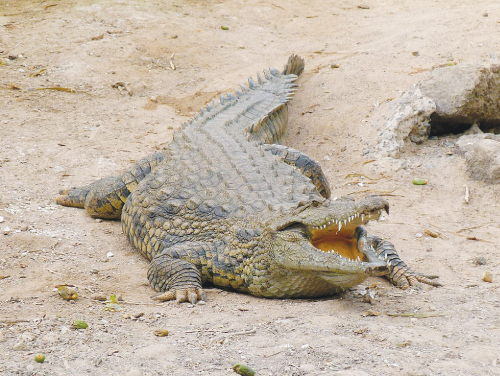
The Kumana National Park and the Bundala National Park are two natural treasures of our motherland. Today, Dinara Hettiarachchi will be taking you on a safari through these two wetlands, which are a vital part of the environment.
Kumana National Park
When we make our way to the Eastern Province, we find the Kumana National Park 319 kilometres southeast from Colombo. It shares borders with the Yala National Park, and was called Yala East National Park until 2006. The park’s south boundary is the Kumbukkan Oya, and the closest major city to the park is Hambanthota. The Kumana Wetland Cluster covers 19,011 hectares. Some 20 lagoons and tanks can be seen in Kumana.
It has been named as one of the six Ramsar Wetlands in Sri Lanka, by the Ramsar Convention on Wetlands in 2010. 
This convention was brought into place to give legal protection to wetlands around the world, and to preserve them for our future generations.
The Kumana Bird Sanctuary was declared in 1938, and has been a part of the National Park since its establishment in 1970. When you go through the park, you are bound to stumble upon it at some point. Some rare birds found in this sanctuary are the Black-necked Stork, the Lesser Adjutant, the Eurasian Spoonbill and the Great Thick-knee. Common migrants to this area include pintail snipes from Siberia, the Indian cormorant and the purple heron. They give the Kumana park a bizarre exquisiteness, and birdwatchers and environmentalists love visiting the sanctuary to document and photograph these wonderful birds.
 Reptiles such as the Mugger Crocodile and the Indian Flap-Shelled Turtle are spotted in the Kumana National Park as well as the Indian Black Turtle.
Reptiles such as the Mugger Crocodile and the Indian Flap-Shelled Turtle are spotted in the Kumana National Park as well as the Indian Black Turtle.
The Kumana Park’s flora is mostly dominated by Manilkara hexandra (Palu). Cassia fistula (Ehela) and Chloroxylon swietenia (Burutha) are also some common trees in the inland forest of the park. There are also some unique flowers and plants in the swamps of the Kumana park. Some examples are the Nelumbo nucifera (Lotus – Nelum) and the Nymphaea Pubescens (Pink water-lily - Manel).
Bundala National Park
After our safari in the Kumana National Park, we go a little further south and take a turn to the southern direction at Kirinda Junction, 7 or 8 kilometres after the Hambanthota Saltern and enter the Bundala Park.
The Bundala National Park is the first of the six Ramsar wetlands in Sri Lanka. It’s also one of the most valued parks in Sri Lanka, according to the Ramsar Convention of 1990.
Since the Ramsar Convention was established, it caught the attention of people worldwide and so, tourism exploded in areas with wetlands. Many scientists and biologists also come to these areas for the purpose of studying the flora and fauna.
A few Asian Elephants can still be seen in the forests of Bundala, as well as toque macaques (rilawa). But the Bundala national park is much more renowned as a bird sanctuary.
Many bird species have been recorded in this park, and among them, 50 species have been found to be migrants, and eight considered exotic. The Bundala Park holds over 15,000 birds. Mammals, fish, reptiles and amphibians, as well as insects unique to this area are frequently found as the wetland is a hotspot of biodiversity.
The Phoenicopterus roseus (greater flamingo - raja siyakkaarayaa) lives in flocks of between 500 and a thousand birds. They are of a mixed white, rose and red in colour. It migrates to the Bundala Park in Sri Lanka during the winter and is mostly found in Africa, the Middle East, Southern Asia and Southern Europe. They are seldom seen in any other places.
The greater flamingo can grow up to 150 centimetres in height, and its wingspan (the distance between the corners of the two wings when extended) is about one metre. As the raja siyakkaarayaa has long legs, it stalks for prey in shallow water and marshes.
Other beautiful birds, such as the blue-tailed bee-eater and the Asian openbill inhabit the trees of the Bundala Park.
But because of the destruction of these birds’ natural habitats, such as marshes and lagoons, there have been many threats to their population. Electricity wires have also proven dangerous for these beautiful avians. Trees are threatened by deforestation as well. It is our duty to protect the most important wetlands of Sri Lanka, and the animals and plants in it for our future generations to experience the beauty of nature.
